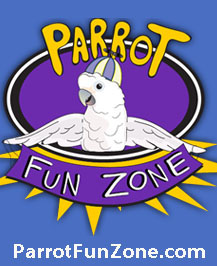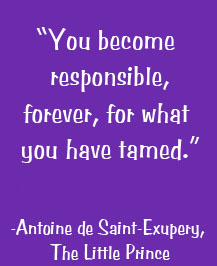Implementing an Effective Foraging Strategy
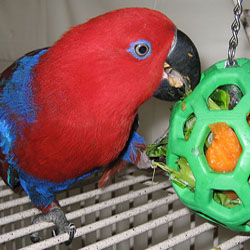 Transitioning to a foraging based feeding scenario should occur in stages. You don't want to require your bird to have master safecracker credentials to be able to eat. The initial goal is to stimulate your bird's curiosity and get him moving throughout his cage in search of food.
Transitioning to a foraging based feeding scenario should occur in stages. You don't want to require your bird to have master safecracker credentials to be able to eat. The initial goal is to stimulate your bird's curiosity and get him moving throughout his cage in search of food.
- Continue to provide your bird's regular diet in his usual bowl.
- Start by placing treats and their favorite foods within multiple bowls spread high and low throughout the cage.
- Once your bird catches on to the idea of moving, searching and retrieving items, increase the complexity of the task.
- Hide the food by loosely covering the cups with paper. The paper can be taped down when this gets too easy for your bird.
- You can also start off with easy homemade devices such as Dixie cups, small paper bags or cardboard tubes that can easily be crumpled around the treats.
- Let your bird observe the placement of treats in these devices and demonstrate their retrieval.
- Progress to puzzle oriented toys that require problem solving and manipulation such as opening hatches, turning compartments, opening drawers, unscrewing hardware or shredding material to gain access to the food. Check out this video of a clever African Grey foraging for a treat in the Zig Zag maze toy:
Some more great foraging ideas....
- Create a Foraging Tray by burying dried foods under toy parts, washed stones or similar items that require your bird to sift, lift and rummage through to find food.
- Skewers fruits and veggies using a stainless steel kabob.
- Hide treats inside destructible Vine Balls to encourage chewing.
- Stainless steel nut cages are wonderful for holding a variety of foods and stimulating play activities.
- For small birds, hide millet inside a Chinese finger trap or wrap it up in an easy to chew paper cupcake cup.
- Hide peanuts or almonds inside a leather pouch drilled with holes to entice exploration.
- Weave veggies thru the cage bars.
- Create edible food wraps by placing treats inside of lettuce leaves or tamale wrappers and then tying off the ends.
You are limited only by your imagination in how you set up a treasure hunt for your bird. Sit back, enjoy and be amazed as your bird demonstrates his skills!
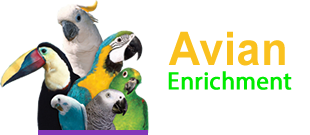

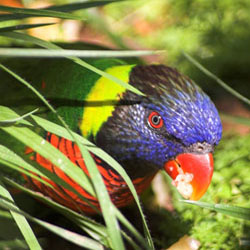 When there is an abundance of food in a natural environment, birds have the luxury of being picky in their search for the most delectable fruit or berry. As frustrating as it is to find our carefully prepared meals all over our carpets and sticking to our walls, they are not being obstinate or commenting on our culinary skills. It is a natural behavior for birds to take just a few bites of something and then drop the rest. Actually, in the wild, the flinging of food fulfills an important role in the ecosystem. In the process of "wasting" food they are distributing seeds and providing food to ground dwelling species. Unfortunately, this an example of a behavior that we must adapt to and accept (sigh).
When there is an abundance of food in a natural environment, birds have the luxury of being picky in their search for the most delectable fruit or berry. As frustrating as it is to find our carefully prepared meals all over our carpets and sticking to our walls, they are not being obstinate or commenting on our culinary skills. It is a natural behavior for birds to take just a few bites of something and then drop the rest. Actually, in the wild, the flinging of food fulfills an important role in the ecosystem. In the process of "wasting" food they are distributing seeds and providing food to ground dwelling species. Unfortunately, this an example of a behavior that we must adapt to and accept (sigh).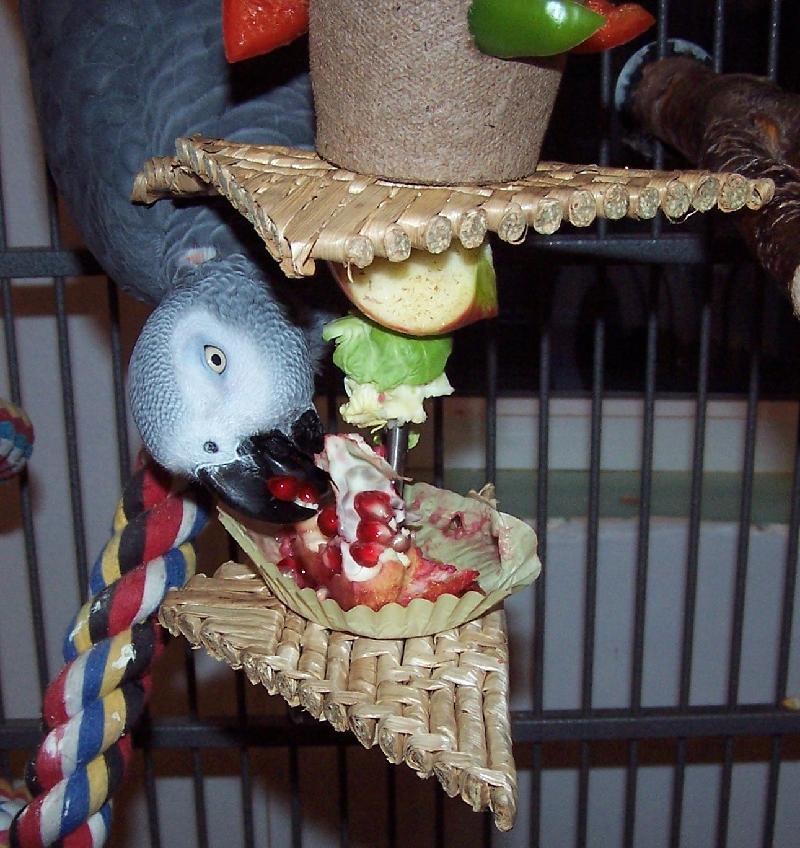 Parrots spend up to 70% of their day searching for food in the wild. Once found, the food needs to be peeled or cracked open. Contrast that level of engagement with the typical "fast food" lifestyle that most captive birds experience. Each day their food is neatly delivered to them, often nicely chopped up, in a bowl. Hmmm, so how are they supposed to spend the rest of their day?
Parrots spend up to 70% of their day searching for food in the wild. Once found, the food needs to be peeled or cracked open. Contrast that level of engagement with the typical "fast food" lifestyle that most captive birds experience. Each day their food is neatly delivered to them, often nicely chopped up, in a bowl. Hmmm, so how are they supposed to spend the rest of their day?

